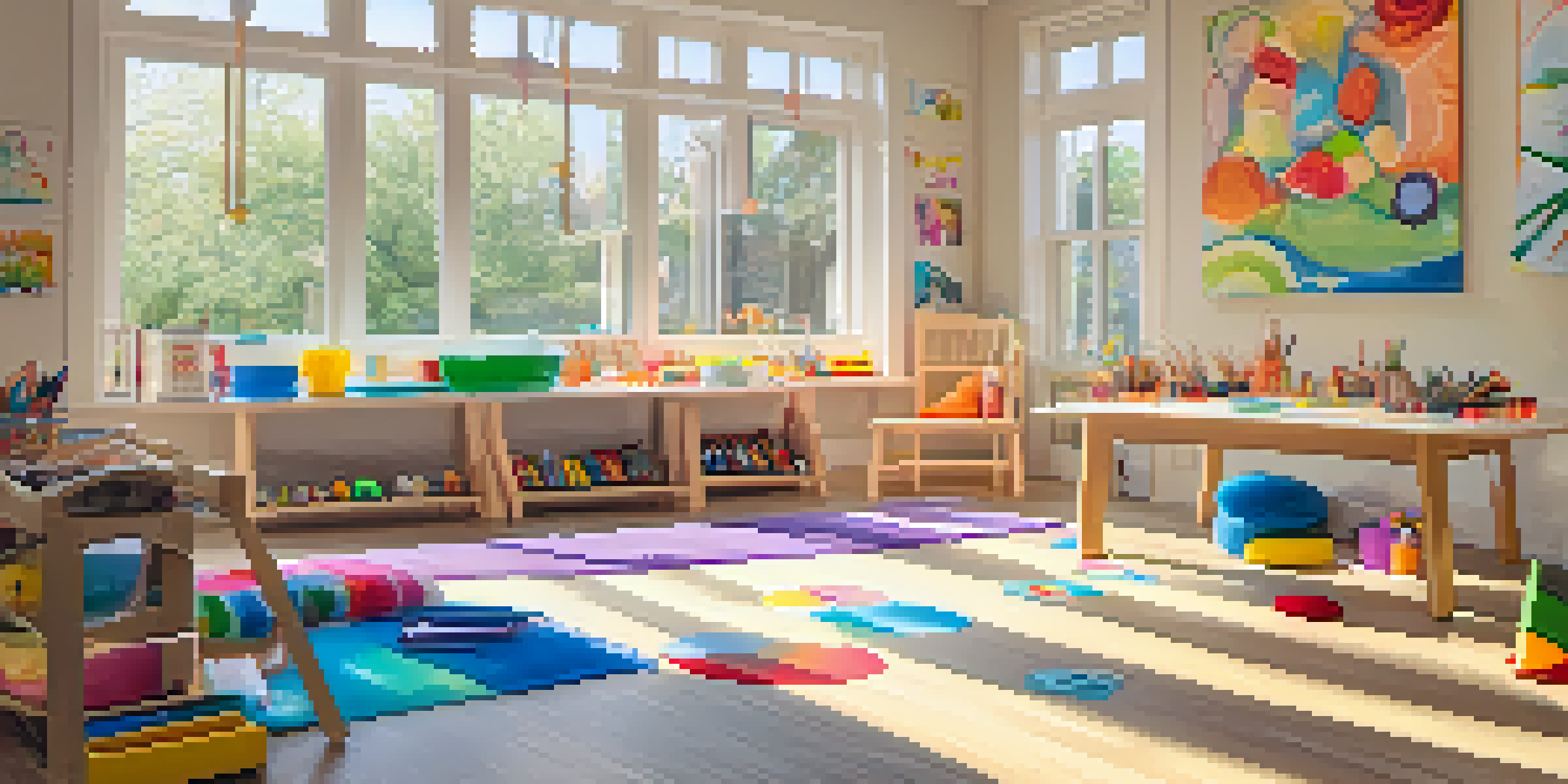The Role of Play in CBT for Children and Adolescents

Understanding Cognitive Behavioral Therapy (CBT) for Youth
Cognitive Behavioral Therapy, or CBT, is a popular approach used to help children and adolescents manage their thoughts and feelings. It's based on the idea that our thoughts influence our emotions and behaviors. By addressing negative thought patterns, CBT aims to foster healthier coping strategies. This method is particularly effective with young clients, as it can be adapted to suit their developmental stage.
Play is the highest form of research.
For children and teens, traditional talk therapy might not always resonate. Their minds are often more active and imaginative, which is where play comes into the picture. Play can serve as a bridge, allowing young clients to express themselves and process experiences in a more natural, engaging way. This makes CBT not only effective but also fun, which is crucial for maintaining their interest and motivation.
Overall, understanding CBT sets the stage for exploring how play can enhance its effectiveness. The fusion of structured therapeutic techniques with the spontaneity of play creates a dynamic healing environment. This is especially important in sessions with younger clients who may struggle to articulate their feelings verbally.
The Therapeutic Benefits of Play for Children
Play is not just a leisure activity; it's a vital component of childhood development. Through play, children learn to navigate their emotions, develop social skills, and express creativity. When incorporated into therapy, play becomes a powerful tool that can help children process complex feelings and experiences. It allows them to enact scenarios, making sense of their world in a safe space.

Moreover, play can reduce anxiety and build resilience. When children engage in playful activities, they often feel more relaxed and open, which can lead to deeper therapeutic insights. The act of playing can also distract from stressors, allowing for a more focused and productive session. This is particularly beneficial for children who may feel overwhelmed by the idea of traditional therapy.
CBT Benefits from Play Integration
Cognitive Behavioral Therapy (CBT) is enhanced by incorporating play, making it more relatable and engaging for children.
Ultimately, the therapeutic benefits of play help create a foundation for healing. By encouraging emotional expression and problem-solving through play, therapists can foster a sense of safety and trust. This positive environment is crucial for effective therapy, enabling children to tackle their challenges head-on.
How Play Enhances Cognitive Behavioral Techniques
In CBT, techniques like cognitive restructuring or exposure therapy can be challenging for children to grasp. Incorporating play into these techniques can make them more relatable and understandable. For instance, using role-playing games can help children practice new behaviors or confront fears in a playful context. This method not only makes learning fun but also reduces the pressure often associated with therapy.
Children learn as they play. Most importantly, in play, children learn how to learn.
Additionally, play allows therapists to observe children's behavior in real-time, providing valuable insights. Through play, therapists can identify patterns, triggers, and coping strategies that children might not articulate otherwise. This observational aspect enriches the therapy process, enabling tailored interventions that resonate with the child's unique experiences.
By enhancing CBT techniques with play, therapists can create a more engaging and impactful experience. This playful approach not only makes therapy enjoyable but also empowers children to take an active role in their healing journey. It bridges the gap between therapeutic concepts and playful exploration, leading to a deeper understanding of themselves.
Types of Play Used in CBT for Children
Various types of play can be utilized in CBT, each serving specific therapeutic goals. For example, art therapy allows children to express their feelings through drawing or painting, providing a visual representation of their emotions. Similarly, storytelling or puppetry can help children articulate their thoughts and experiences in a non-threatening way. These creative forms of play can break down barriers and encourage communication.
Another effective method involves using games that promote problem-solving and teamwork. Board games or role-playing scenarios can foster social skills and teach coping mechanisms in a fun, interactive way. Through these activities, children learn to navigate challenges while practicing emotional regulation and decision-making skills.
Play Facilitates Emotional Expression
Through various play modalities, children can express complex feelings and experiences in a safe and creative environment.
Incorporating various play modalities not only enriches the therapy experience but also caters to different learning styles. By integrating diverse types of play, therapists can ensure that each child feels understood and engaged. This tailored approach ultimately leads to a more effective therapeutic journey.
Case Studies: Success Stories in Play-Based CBT
Real-life examples of play-based CBT highlight its effectiveness in helping children and adolescents overcome challenges. For instance, a young boy struggling with anxiety found relief through a combination of role-playing games and storytelling. By acting out his fears in a safe environment, he gradually learned to confront and manage his anxiety. This case illustrates how play can facilitate progress in a way that traditional methods may not.
Another success story involves a girl who had difficulty expressing her emotions. Through the use of art therapy, she was able to create visual representations of her feelings. This process not only helped her communicate her thoughts but also provided insights for her therapist, leading to more targeted interventions. Such examples showcase the transformative power of play in therapy.
These case studies serve as a testament to the impact of play in CBT. They demonstrate how play can unlock potential, foster emotional growth, and lead to lasting changes. By sharing these success stories, we can inspire more therapists to embrace play-based techniques in their practice.
Incorporating Play into CBT: Practical Strategies
For therapists looking to incorporate play into their CBT sessions, several practical strategies can be beneficial. First, establishing a playful environment can help set the tone for therapy. This might involve using toys, games, or art supplies to create a welcoming and engaging space. When children feel comfortable, they are more likely to open up and participate actively in the therapeutic process.
Another strategy is to tailor activities to the child's interests. By integrating elements that resonate with the child, therapists can foster engagement and motivation. For example, if a child loves superheroes, using superhero-themed games or stories can be an effective way to explore coping strategies and problem-solving skills. This personalized approach makes therapy feel more relevant and enjoyable.
Future of Play in Therapy
The integration of play in therapy is expected to grow, with advancements in technology offering new ways to engage young clients.
Lastly, therapists should remain flexible and adaptable during sessions. If a particular play activity isn't resonating, it's important to pivot and try something new. This responsiveness not only keeps the sessions dynamic but also demonstrates to the child that their feelings and preferences are valued. By implementing these strategies, therapists can create a rich, engaging therapeutic experience.
The Future of Play in CBT for Youth
As the field of mental health continues to evolve, the role of play in CBT for children and adolescents is likely to grow. Increasing recognition of the importance of play in therapeutic settings is paving the way for innovative approaches. Therapists are becoming more aware that incorporating play can enhance engagement and effectiveness, leading to improved outcomes for young clients.
Moreover, advancements in technology are opening new avenues for play-based therapy. Virtual reality, for example, can create immersive environments where children can explore their feelings and practice coping strategies. This technological integration offers exciting possibilities for enhancing traditional play techniques, making therapy more accessible and relatable to today's youth.

Looking ahead, the future of play in CBT holds great promise. As research continues to support its benefits, more practitioners are likely to adopt play-based methods in their work. By embracing this dynamic approach, we can ensure that therapy remains engaging, effective, and aligned with the developmental needs of children and adolescents.